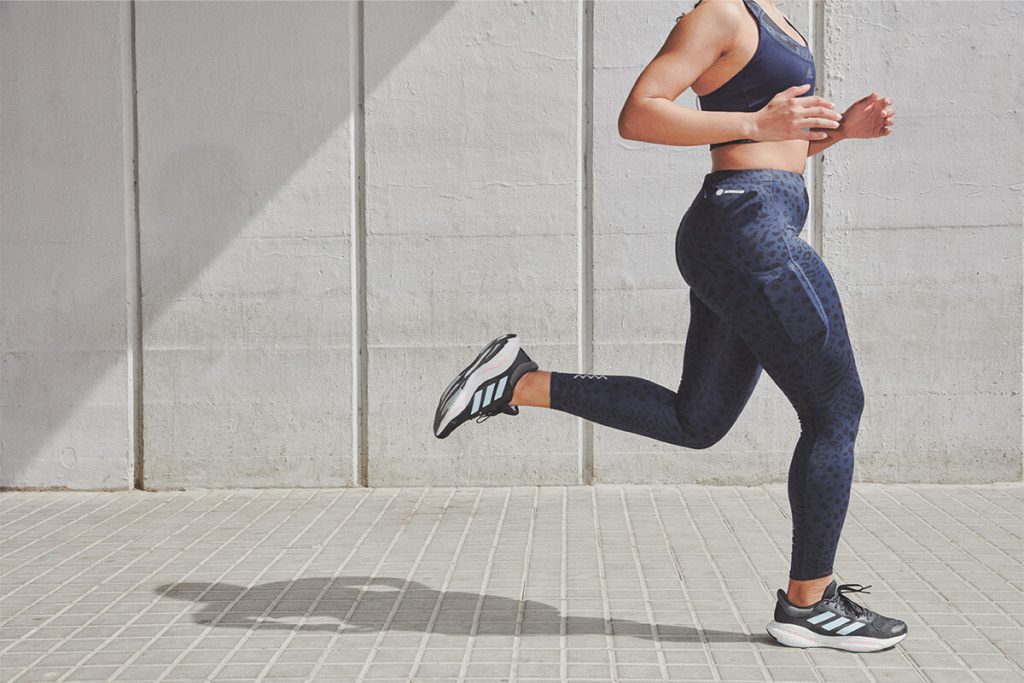How To Burn Fat While Running
When we exercise, our body uses carbohydrates, fat, and acids to propel our movement. Some types of exercise burn fat more effectively. The intensity level of your workout impacts the amount of fat burned during and in the hours following.
Yes, you can burn fat while running. But how? Here’s an FAQ guide to fat burning running.
A Note About Running for Weight Loss
Losing weight is not the same as losing fat. Muscle weighs more than fat and increases overall health. Fat weighs less, but high amounts of fat can lead to health problems. People can be light in weight and high in fat. Skinny people aren’t necessarily healthier! For more information on a healthy body fat percentage, see our blog post about body composition.
Therefore, fat loss is more important than weight loss. Yes, running helps you lose weight because running burns calories. And even if just a small percentage of those calories come from fat, it can still significantly boost your weight loss
Running for Fat Loss FAQs
Q1. Does Running Burn Fat?
Running is an exercise that burns fat, and the exercise intensity affects how much you burn during the workout itself. Exercise is categorized into two intensity levels: aerobic versus anaerobic.
- Aerobic: lower-intensity exercise whereby normal breathing is sufficient. The body can sustain the work for longer because the heart rate is no higher than 65%. The body uses oxygen and fats to fuel activity.(1)
Examples: walking, jogging, and hiking - Anaerobic: higher-intensity exercise where oxygen and fats are not sufficient fuel. So, the body uses carbohydrates and acids (like lactic acids and amino acids).(2)
Examples: running with dumbbells, HIIT running, and hill runs
Q2. How Long Should I Run To Burn Fat?
A slow, low-intensity run uses more fat for fuel but takes longer to burn a lot of calories in total. That’s why it’s advised to run longer than 30 minutes when running at a low intensity.
Q3. Does High-Intensity Running Burn Fat?
High-intensity training pushes our heart rate up until we reach the anaerobic zone. During high-intensity runs, the percentage of fat burned is lower because our bodies resort to our carbohydrate reserves.
However, due to intense exercise, the total calorie consumption is higher. We burn more calories due to the hard muscle work – even AFTER the run. The body needs more energy for recovery, thereby burning even more calories. That’s how you benefit from post-workout fat burning and the afterburn effect (EPOC, excess post-exercise oxygen consumption). You can benefit from losing body fat even after your workout as your body keeps burning fat for two to three hours after finishing a run.
A study comparing high-intensity (HIIT) versus moderate-intensity continuous training (MOD) concluded that HIIT and MOD both burn fat. But, HIIT produced 28.5% greater total absolute fat mass reduction than MOD.(3)
One reason for increased fat loss due to high-intensity running is that anaerobic exercise typically builds more muscles. Muscles are generally more effective at burning calories.
The Bottom Line
If you want to lose a lot of fat quickly, then run interval workouts. The adidas Running app has an interval workouts feature.
Q4. Does Jogging Burn Fat?
The body uses both fat and carbohydrate reserves as fuel during all kinds of activities. However, the percentage of energy coming from fat can be higher or lower depending on the type of activity.
In general, more fat is burned:
- During low-intensity physical activities (like jogging).
- During longer activities. The longer the activity, the higher the percentage of burned fat (like hiking).
- If you are in better shape overall. The fitter you are, the better you can use fat as fuel.
So: if you’re very fit, then jogging probably doesn’t burn much fat in your body. But if you’re new to running or exercise, you will burn fat by jogging.
Q5. How To Burn Fat?
Fat burning refers to the ability of our bodies to oxidize or burn fat. When we “burn fat,” we use it as fuel instead of carbohydrates. This is an aerobic process: fat is broken down with the help of oxygen. In general, more fat is burned during aerobic activities like Nordic walking, running, or biking.
Q6. Can I Burn Fat In Specific Areas Of My Body?
Many readers ask the following questions:
- Does running reduce belly fat?
- Does running reduce thigh fat?
- Can I try running to lose fat in the stomach?
- Does jogging burn belly fat?
Generally speaking, the answer is NO: it’s impossible to “spot-treat” fat deposits in the body with exercise. The location of fat loss depends on the runner’s genes, gender, and diet. Running does burn belly fat— if that’s where your body chooses. Everyone is genetically predisposed to keep fat in certain areas, even if they exercise and eat well. You may never lose the fat in one area of your body. That’s okay! It’s there for a reason.
Focus on the other benefits of running for fat loss:
Q7. Do I Need To Do Fat Burn Runs?
No. If you don’t like running, then don’t do it! You can burn fat through other kinds of exercise, like strength training and yoga (both are available on the adidas Training app).
But you might also ask yourself, “Why do I want to lose fat?” Make sure you’re embarking on your fat-loss journey mindfully and lovingly. Here are two blog posts that can help:
Conclusion
Overall, this blog post bears great news! In summary:
- You can burn fat running and lose weight running.
- It’s effective whether you run long, slow jogs, or high-intensity intervals.
- Running and jogging help lose belly fat. And body fat in general!
So, are you ready to make a plan to run for fat loss? Use our adidas Running app to create goals and track your progress!

